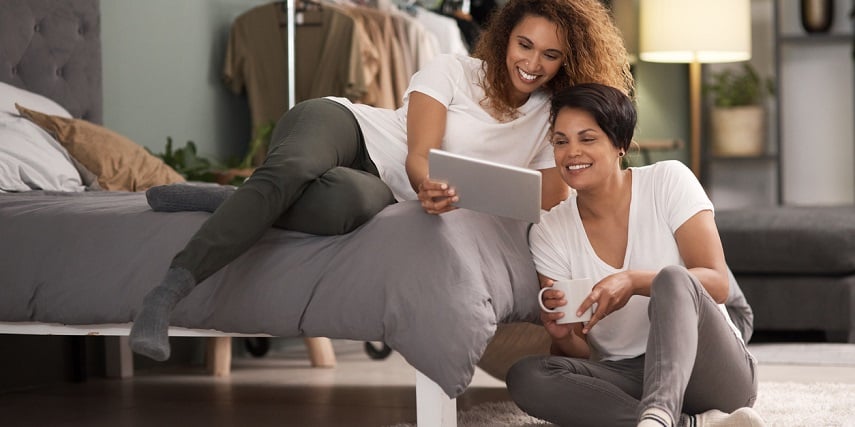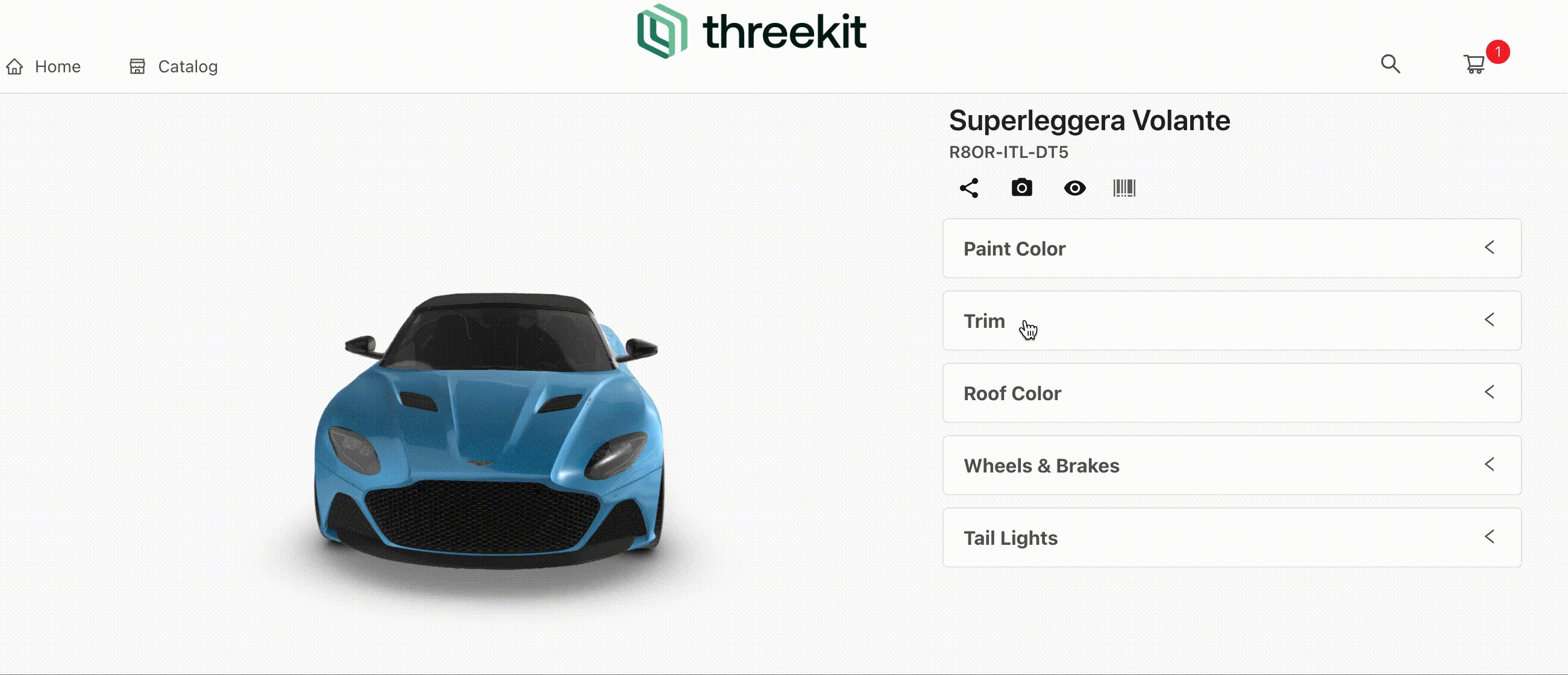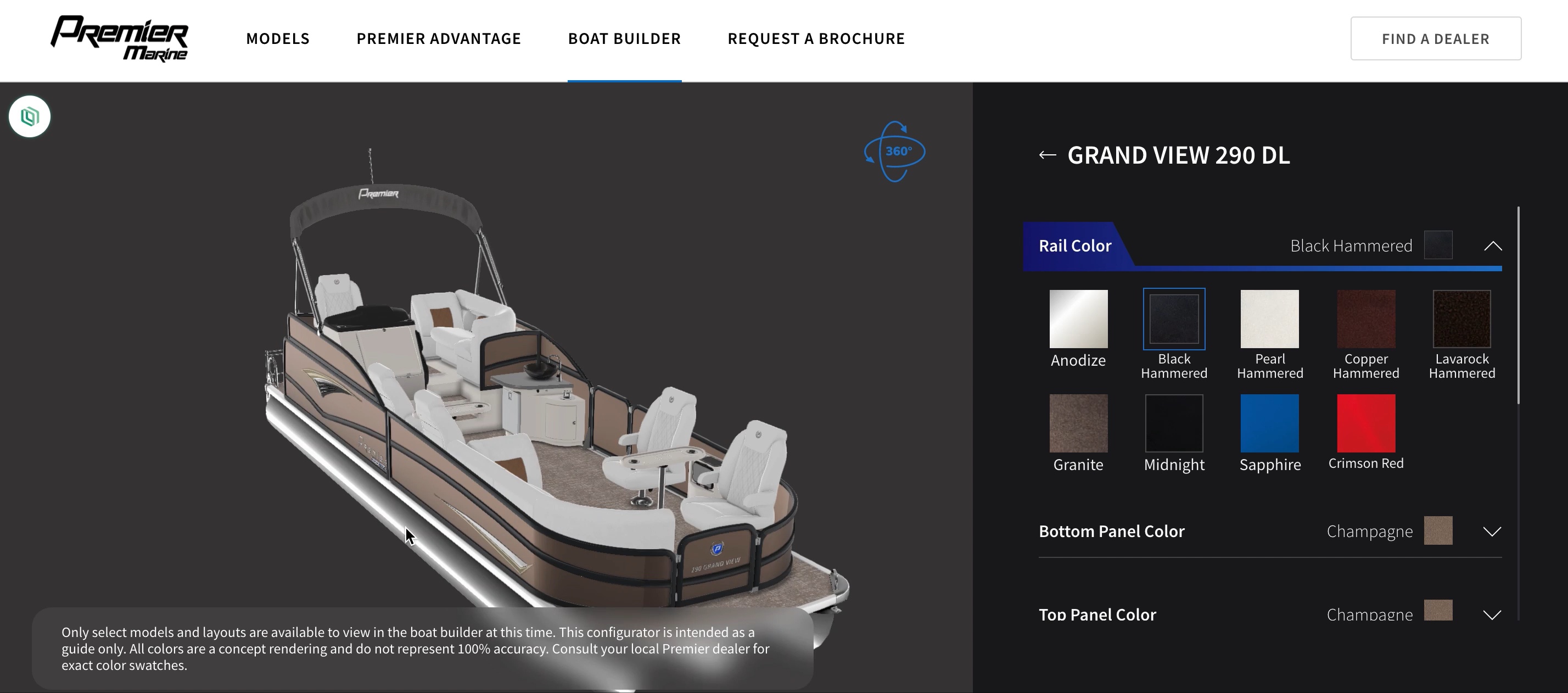How 3D Images in a Visual Configurator Boost B2C Customer Satisfaction

Ever since people started lining up to wear paper glasses with cellophane lenses to watch movie characters jump off the screen, the public has been captivated by 3D visuals. Today, B2C eCommerce customers heavily prefer 3D images through a visual configurator to their more limited 2D counterparts.
Customizable products are growing in popularity, and visual configurators facilitate the creation and visualization of increasingly complex products. Visual configuration methods must evolve alongside the custom product options.
New product lines with more complex configuration options necessitate implementing the next generation of methods to visualize them.
From the B2C customer's perspective, these techniques have plenty of advantages, even for the simplest custom products. We'll discuss the top three reasons B2C customers prefer 3D images and how visual configurators bring them to life.
1. Uninterrupted Product Visualization
3D images allow for better visualization than ever before. They're capable of presenting uninterrupted product views with full, 360° rotation on one axis (or more) so users can see different angles. 3D models and 360° visuals provide users with the ability to:
- See products from every angle.
- Spin the image and position it however they want.
- Zoom in on details that might be harder to see in 2D images.
- See their configuration and customization choices on all sides.
- Interact with the product similar to the way they would in person.
- Gain a better understanding of its functionality through enhanced features and perspectives.
Virtual in-store buying experience
As a result of this unique capability, using a visual configurator helped customers relate to products by digitally recreating the shopping methods they use in person. They gained the ability to virtually view and handle the items in ways that simulate their typical in-store options.
In physical stores, they can lift products to see them from underneath. Likewise, 3D images allow you to display 360-degree views on more than one axis, so they can spin the model to view all sides as if they're walking around it and rotating it in their hands.
While they can't just stand closer to the item to get a better look, they can zoom in to see even the smallest detail.
Interactivity and control
Part of the reason people like these visuals so much is the level of interactivity. When users look at 2D images or watch traditional product videos, the experience is entirely passive. So, when the available products don't meet their needs and images are subpar, they're forced to settle for the option they dislike the least.
In fact, when they're unable to meaningfully engage with products, shoppers can begin to feel like the experience isn't truly about them. A lack of quality options and visuals makes it seem like businesses aren't really engaging with them, either.
After all, if it were, wouldn't it reflect them and their needs enough to provide relevant options?
A visual product configurator allows consumers to configure their own products and customize them with add-ons.
The ability to move the images, make them do what they want and change different elements helps put the consumer in control. The visual configurator's 3D images give them that.
2. Versatility and Dynamic Functionality

Everyone is different. Each customer will prefer different products and options, as well as different methods of interacting with the visual content.
The entire focus here is on choice and individuality. That extends to the visuals, too.
With the visual configurator's transformational capability, they'll have a rich selection at their fingertips.
The interactivity level is on a broad spectrum, as well.
Customers can passively observe or click on images. If they prefer more control, they can use the spin and zoom features or augmented reality (AR) to let the product temporarily become part of their world.
To be truly interactive, they can use the 3D product configurator's visuals for virtual reality (VR) and enter its world instead. Our VR-ready assets make it easy to provide a completely immersive experience.
Here are some examples of the different visualizations you can create using a visual configurator and 3D visuals:
- Photorealistic virtual photography
- New photos of products in different colors, styles and even locations/settings
- Custom product visualization that updates using automation to respond to changes in real time (Adding a CPQ integration will automate updated price quotes, too.)
- Short GIFs of new products and features
- 360-degree product videos
- Augmented and virtual reality-ready visuals
Engaging and entertaining
These things might be popular with businesses because of their cost-effectiveness or effect on profits. But that's not what customers care about.
They like them because they're fun and they illuminate the product for them. Here are some ways these visuals are both enjoyable and useful for consumers:
- Shareable GIFs entertain and help them see a specific product function
- Illustrative videos like tutorials and explainer videos exhibit product functionality to effectively demonstrate how it works and provide a deeper understanding of the product in a fun way
- Adding hotspots, or interactive elements that respond to user engagement, to visuals allows them to give added context when prompted
- AR and VR allow more immersive customer experiences to differing degrees to allow users to grasp, acclimate to and enjoy your product before they've ever been in the same room with it.
Click here to learn more about our visual configurator. See our integrations for eCommerce platforms like WooCommerce, Magento and Salesforce.
3. Extra Purchase Confidence and Incentive
Many B2C customers are hesitant when it comes to eCommerce purchases, especially more expensive ones or those that can't be easily returned. Having never seen it in person, felt the texture, seen the color without the possibility of display differences from their monitor or interacted with it directly, they understandably fear it won't be what they expected.
These visualizations help bridge that gap for them and make them feel more secure in their purchase. Here are some examples:
- Visuals using product customizer features like our AR API let users see products in their space or try on items before they buy. This can increase their confidence and their chances of making a purchase.
- 360° 3D visuals let consumers inspect the entire product. It provides enough reassurance so shoppers check out rather than abandon their shopping cart. They also engage with ads using 3D visuals three times as much as other ads.
- With 3D product configuration, they create their ideal product. The visual configurator provides updated visualization and pricing for their configurable product, so there are no surprises.
The stats back this up:
- 360° visuals are shown to boost conversion rates by up to 50%.
- AR makes customers 66% more confident.
- The odds of conversion increase by 300% with AR.
AR plays such a big role because watching themselves use the product, especially after they created and designed it to their own preferences, makes them feel more psychological ownership, the feeling that the item already belongs to them.
Give the People What They Want
Now that you know the appeal for consumers — and benefits for you — you can clearly see why its popularity has taken off. This doesn't even touch on any of the ways that our visual configurator streamlines the sales process and makes your sales team more efficient!
Get in touch to learn more about how Threekit's product customization platform can help your business.




